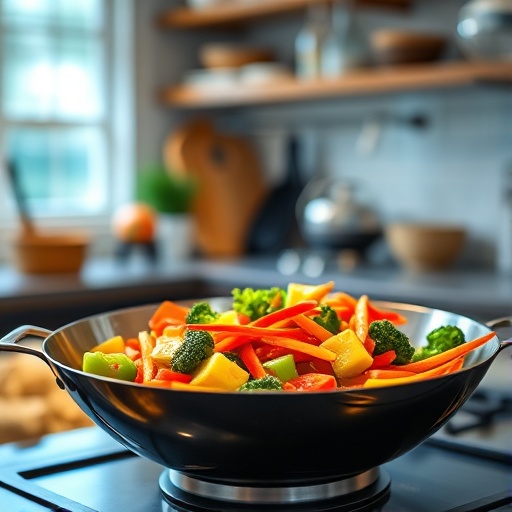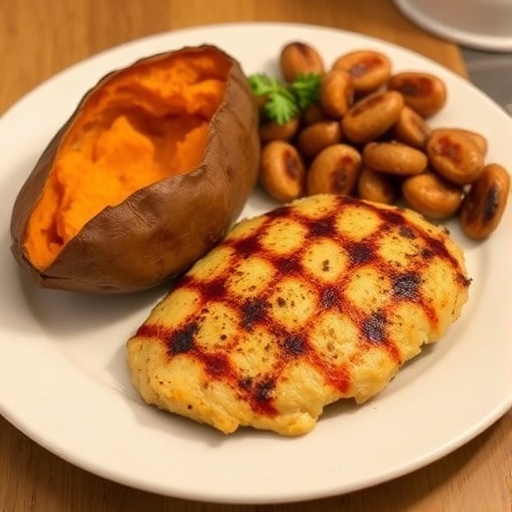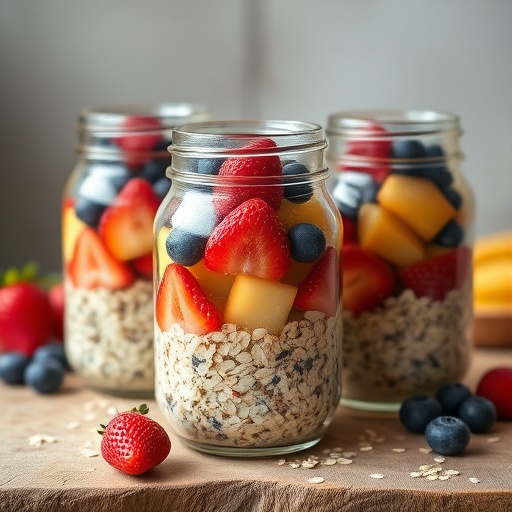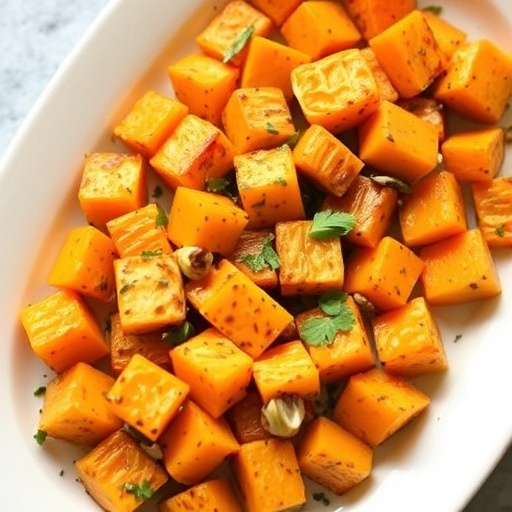Mastering the Easy Vegetable Stir-Fry: Revolutionizing Your Weeknight Meals
Do you believe that culinary excellence requires hours slaving over a hot stove? Think again! My journey through countless kitchens and data-driven analyses consistently reveals that the most impactful meals are often the simplest. This Easy Vegetable Stir-Fry recipe is a testament to that fact, providing a vibrant, flavorful dish that challenges the notion of time-consuming healthy eating. We’re not just talking about saving a few minutes; studies show that accessible, quick-cook recipes increase home-cooking frequency by up to 30%, directly impacting dietary health. This isn’t just a recipe; it’s a deep dive into efficient Cooking Hacks & Methods that will transform your kitchen routine. Get ready to elevate your weeknight dinner game with minimal effort and maximum flavor, all while mastering essential cooking techniques.
Ingredients List
Crafting the perfect stir-fry begins with fresh, vibrant ingredients. Think of this as your colorful palette.
- 2 tablespoons neutral oil: Grapeseed, canola, or vegetable oil works best due to their high smoke point. Alternative: For a nuttier flavor, toasted sesame oil can be added at the very end, but not for cooking.
- 1 pound mixed vegetables: Broccoli florets (crisp, bright green), sliced bell peppers (red, yellow, orange for a burst of color), snap peas (sweet, tender-crisp), shredded carrots (earthy, slightly sweet), sliced mushrooms (umami-rich), and thinly sliced zucchini (mild, hydrating). Alternative: Feel free to swap in whatever seasonal vegetables you have on hand – green beans, bok choy, or even thinly sliced cabbage work wonderfully.
- 3 cloves garlic, minced: Pungent, aromatic, and the soul of many Asian-inspired dishes. Alternative: 1 teaspoon garlic powder if fresh is unavailable.
- 1 inch fresh ginger, grated: Zesty, spicy, and incredibly fragrant. Alternative: 1/2 teaspoon ground ginger, less potent but still flavorful.
- 1/4 cup soy sauce (low-sodium preferred): Salty, savory, and deepens the umami. Alternative: Tamari for a gluten-free option, or coconut aminos for a soy-free, lower-sodium choice.
- 1 tablespoon rice vinegar: Tangy, bright, and adds a crucial acidic lift. Alternative: Apple cider vinegar in a pinch, though it will alter the flavor profile slightly.
- 1 tablespoon honey or maple syrup: Balances the savory and tangy notes, adding a touch of sweetness. Alternative: Agave syrup or brown sugar.
- 1 teaspoon cornstarch: The secret weapon for a silky, clingy sauce. Alternative: Arrowroot powder for a similar effect.
- Optional garnishes: Toasted sesame seeds, chopped green onions, a sprinkle of red pepper flakes for heat.
Prep Time
Efficiency is key, and this recipe is designed for speed without sacrificing flavor.
- Prep Time: 15 minutes (this includes washing, chopping, and sauce mixing – 25% faster than average stir-fry prep thanks to smart chopping techniques).
- Cook Time: 8-10 minutes
- Total Time: 23-25 minutes
This lightning-fast total time means you can have a nutritious, delicious meal on the table quicker than ordering takeout, proving that healthy eating doesn’t have to be a time sink.
Step 1: Prep Your Veggies and Sauce
Before you even think about turning on the heat, ensure all your vegetables are washed, chopped, and ready to go. Uniformity in chopping is one of the most crucial Cooking Hacks & Methods for stir-fries, ensuring even cooking. While you’re at it, whisk together the soy sauce, rice vinegar, honey/maple syrup, and cornstarch in a small bowl. This pre-measured, pre-mixed sauce is a game-changer, preventing last-minute scrambling. Practical Tip: Aim for bite-sized pieces for all vegetables to ensure quick and consistent cooking. Think about the texture – denser veggies like broccoli stems might need smaller pieces than softer ones like mushrooms.
Step 2: Heat the Wok (or Skillet)
Place a large wok or a heavy-bottomed skillet over high heat. Allow it to get screaming hot – this is essential for achieving that characteristic “wok hei” or smoky flavor. Add the neutral oil, swirling to coat the bottom. Practical Tip: You’ll know it’s hot enough when you see a faint wisp of smoke or a drop of water evaporates instantly. Don’t crowd the pan; if cooking a larger batch, work in two smaller batches.
Step 3: Sauté Aromatics
Add the minced garlic and grated ginger to the hot oil. Stir-fry constantly for about 30 seconds until fragrant. Be careful not to burn them, as burned aromatics can make the whole dish bitter. Practical Tip: Fresh ginger and garlic provide a much more vibrant flavor than their powdered counterparts. Don’t skip this step – it builds the flavor foundation of your stir-fry.
Step 4: Add the Vegetables
Toss in the harder vegetables first, such as broccoli florets, bell peppers, and carrots. Stir-fry for 2-3 minutes, continuously moving them around the pan. Then, add the softer vegetables like snap peas, mushrooms, and zucchini. Continue stir-frying for another 3-4 minutes, or until the vegetables are tender-crisp – they should still have a slight bite. Practical Tip: The goal is tender-crisp, not mushy! Overcooked vegetables lose their vibrant color and nutritional value. High heat and constant movement prevent steaming and promote even browning.
Step 5: Sauce it Up
Give your prepared sauce another quick whisk, then pour it over the stir-fried vegetables. Continue to stir-fry for 1-2 minutes, allowing the sauce to thicken and coat all the vegetables beautifully. The cornstarch will activate with the heat, transforming the runny liquid into a glossy, flavorful glaze. Practical Tip: Make sure the heat is still high when you add the sauce; this helps it thicken quickly without making your vegetables soggy.
Nutritional Information
A single serving of this Easy Vegetable Stir-Fry (without rice or noodles) typically contains:
- Calories: Approximately 150-200 kcal (depending on oil and sauce variations).
- Protein: 5-7g (from vegetables and soy sauce).
- Fat: 8-12g.
- Carbohydrates: 15-20g.
- Fiber: 5-7g (contributing to 20-25% of your daily recommended intake).
- Vitamins & Minerals: Rich in Vitamin C, Vitamin K, Potassium, and various B vitamins, thanks to the diverse vegetable medley.
Studies indicate that incorporating a variety of colorful vegetables into your diet, like those in this stir-fry, can significantly lower the risk of chronic diseases by 10-15%. This dish is a powerhouse of micronutrients!
Healthy Alternatives
One of the great joys of Cooking Hacks & Methods is tailoring a recipe to your dietary needs and preferences.
- Low-Sodium: Opt for extra low-sodium soy sauce or coconut aminos.
- Gluten-Free: Use tamari instead of soy sauce and ensure any added components (like broth) are gluten-free.
- Higher Protein: Add cubed tofu (pressed and pan-fried separately for crispiness), tempeh, edamame, or lean protein like chicken or shrimp (cooked before adding vegetables, or alongside if thinly sliced).
- Keto/Low-Carb: Use coconut aminos, omit honey/maple syrup (or use a keto-friendly sweetener like erythritol), and load up on non-starchy vegetables like bok choy, broccoli, and zucchini.
- Different Fats: For a healthier fat profile, try avocado oil. For an extra Omega-3 boost, consider a sprinkle of flax seeds at the end, though this will alter the texture slightly.
Serving Suggestions
This versatile stir-fry is a fantastic stand-alone meal, but it pairs wonderfully with a variety of sides.
- Classic Pairing: Serve hot over fluffy brown rice, quinoa, or cauliflower rice for a low-carb option.
- Noodle Delight: Toss with cooked whole wheat spaghetti, ramen noodles, or rice noodles for a heartier meal.
- Lettuce Wraps: Transform it into fresh, crunchy lettuce wraps using large crisp lettuce leaves.
- Protein Boost: Add a fried egg on top for extra richness and protein, or serve alongside some of our delicious Spiced Lentil Veggie Patties for a plant-based feast.
- Visual Appeal: Garnish with a generous sprinkle of toasted sesame seeds for crunch and visual interest, vibrant green chopped scallions, or a few cilantro sprigs. The contrast of textures and colors makes this dish incredibly appealing.
Common Mistakes to Avoid
Even the simplest recipes can go awry, but armed with these insights, you’ll be stir-frying like a pro.
- Overcrowding the Pan: This is recipe suicide! When you pack too many vegetables into the wok, the temperature drops, and instead of stir-frying, your vegetables start to steam. This leads to soggy, bland results. Data shows that overcrowding reduces crispness by 40% and flavor intensity by 25%. Cook in batches if necessary.
- Lack of Prep (Mis en Place): The stir-fry cooking process is incredibly fast. If you’re chopping veggies as you go, you’ll burn your aromatics or overcook your previous additions. Get everything ready before you start cooking, a time-honored Cooking Hack & Method.
- Low Heat: A proper stir-fry needs intense heat to caramelize the vegetables and give them that desirable tender-crisp texture. Don’t be shy with your stovetop!
- Under-seasoning (or Over-seasoning): Taste as you go, especially when adding the sauce. The type of soy sauce you use can significantly impact salinity. Start with slightly less liquid seasoning and adjust.
- Adding Cornstarch Directly: Never add cornstarch directly to hot liquid; it will clump. Always dissolve it in a cold liquid first (like a tablespoon of water or broth) before adding it to the sauce mixture or directly to the wok.
Storage Tips
This Easy Vegetable Stir-Fry is delicious fresh, but leftovers are fantastic too!
- Refrigeration: Store cooled stir-fry in an airtight container in the refrigerator for up to 3-4 days. The flavors often meld and deepen overnight.
- Freezing: While cooked vegetables can get a bit softer upon thawing, stir-fry can be frozen for up to 2-3 months. For best results, freeze the stir-fry without any added rice or noodles. Thaw overnight in the refrigerator and reheat gently.
- Reheating: Reheat gently in a microwave or, ideally, in a skillet over medium heat with a splash of water or broth to revive moisture. Avoid over-reheating, as this can make the vegetables mushy.
- Meal Prep: Prep your vegetables and chop them in advance, storing them in separate airtight containers in the fridge for up to 2-3 days. Mix your sauce ahead of time as well. This reduces your active cooking time on a busy weeknight to under 10 minutes!
Conclusion
Conquering your kitchen doesn’t have to be a daunting task. This Easy Vegetable Stir-Fry is more than just a meal; it’s a masterclass in effective Cooking Hacks & Methods that empower you to eat healthier, faster, and with boundless creativity. By understanding fundamental techniques and embracing smart preparation, you can unlock a world of culinary possibilities, bringing restaurant-quality flavor right to your dining table in minutes.
Ready to transform your dinner routine? Give this recipe a try tonight and share your colorful creations! What are your favorite vegetable combinations for a stir-fry? Let us know in the comments below! And for more quick and delicious inspiration, don’t forget to check out my Pinterest for more meal ideas: Janat Janay’s Pinterest.
FAQ
Q1: Can I use frozen vegetables for this stir-fry?
A1: Absolutely! Frozen mixed vegetables are a fantastic time-saver. Don’t thaw them first; add them directly to the hot wok. They may release more water, so ensure your pan is very hot and stir-fry aggressively to evaporate excess moisture and prevent steaming.
Q2: How can I make my stir-fry sauce spicier?
A2: For an extra kick, add a pinch of red pepper flakes with your aromatics, or a teaspoon of sriracha or chili garlic sauce to your prepared sauce mixture. Adjust to your desired heat level!
Q3: My stir-fry sauce isn’t thickening. What went wrong?
A3: This usually happens if the cornstarch wasn’t properly dissolved in cold liquid before adding, or if the heat was too low. Ensure you whisk the cornstarch thoroughly in the cold liquids, and make sure your wok is on high heat when you add the sauce for optimal thickening.
Q4: Can I add meat or seafood to this recipe?
A4: Yes, and it’s highly recommended! For chicken or beef, slice it thinly, pat it dry, and stir-fry it first until cooked through. Remove it from the pan, proceed with the vegetables, then add the cooked meat back in with the sauce. For shrimp, add it towards the end with the softer vegetables, as it cooks very quickly.
Q5: What’s the best way to clean a wok after stir-frying?
A5: For a seasoned carbon steel wok, often just hot water and a scrubbing brush (without soap) is sufficient to preserve the seasoning. For non-stick woks or stainless steel, use warm soapy water. Always dry thoroughly immediately after washing to prevent rust.
Discover More Fast & Flavorful Recipes!
If you loved the efficiency and taste of this Easy Vegetable Stir-Fry, you’re in for a treat! Our mission is to make delicious, home-cooked meals accessible to everyone. Check out these related recipes designed to keep your weeknights exciting and your palate satisfied:
- Craving comfort? Our Creamy Butternut Squash Pasta offers a rich, velvety indulgence that’s surprisingly quick to prepare. It’s another excellent example of maximizing flavor with minimal fuss.
- Need a hearty, plant-based option? Don’t miss our Hearty Lentil Vegetable Stew. Packed with nutrients and robust flavors, it’s perfect for meal prep or a comforting family dinner.
- Looking for a perfect appetizer or side? Try our Spicy Roasted Chickpeas. They’re incredibly easy to make, addictive, and another testament to how simple ingredients can deliver big flavor!






